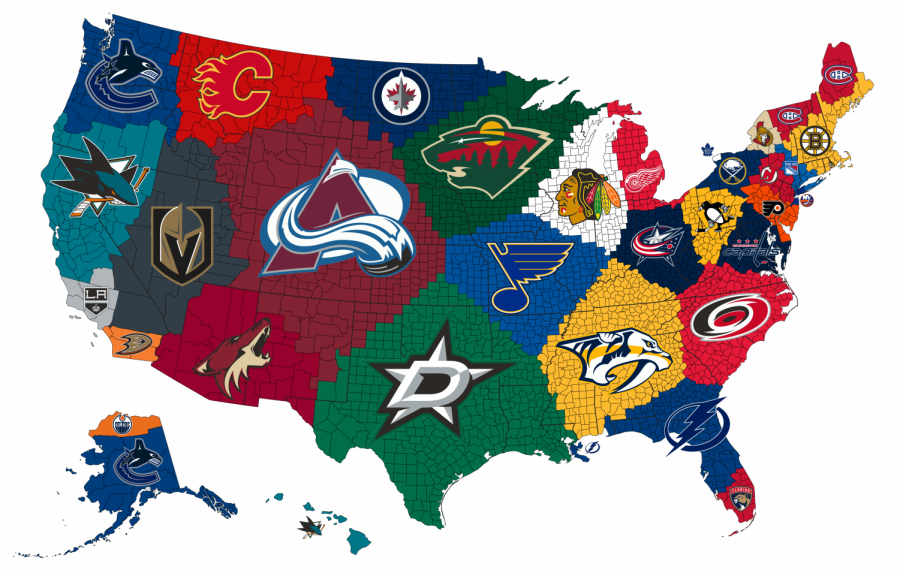2020–21 NHL Season Shaping up to Be Interesting
January 13, 2021 marked the start of the 2020-21 NHL season, which was delayed until after the 2020 playoffs ended in September.
January 19, 2021
January 13, 2021 marked the start of the 2020-21 NHL season. Due to the COVID-19 pandemic, the season was delayed until after the 2020 playoffs ended in September. To reduce team travel, the League has realigned its divisions. The updated divisions — which allow the teams geographically closest to each other to play games, and group the seven Canadian teams into the same division (a necessity as a result of pandemic-related border restrictions) — have simply been named the East, Central, West and North divisions, with each having its own corporate sponsor. The season will consist of 56 games; each team will face each of its division rivals eight times. In the smaller North Division, teams will play each of their rivals nine or ten times.
The East Division is arguably the most elite of the four divisions. Six of the eight teams in the division made the playoffs last year, and five were legitimate competitors. The Boston Bruins and the Buffalo Sabres, the only teams coming from the Atlantic Division (the rest come from the Metropolitan division), are expected to be on opposite sides of the standings. Boston is the favorite to win the division, while Buffalo is the favorite to finish last. The only other competitors for the basement are the New Jersey Devils, who have a young and inexperienced roster. The other five teams each have a chance at snagging the four playoff spots for their division. While the New York Rangers, like the Devils, are young, they have the star power and goaltending to carry them to the postseason. Although the Pittsburgh Penguins still have Sidney Crosby — once the League’s best player — their roster is diminishing around Crosby and long-time teammate Evgeni Malkin. The New York Islanders and Philadelphia Flyers — the second round rivals from last year — both appear to be strong again this year. In their first games, both teams achieved crippling victories: the Islanders crushed the Rangers and the Flyers destroyed the Penguins. The Washington Capitals — winners of the 2018 Stanley Cup — have a strong roster with dynamic goal-scorer Alex Ovechkin leading the way again. I am predicting that the Bruins will finish in first place, followed by the Capitals, Islanders, and Flyers.
The Central Division is the most mixed of the divisions; it contains teams from the former Metropolitan, Atlantic and Central Divisions. The Tampa Bay Lightning, the reigning Stanley Cup champions, have lost star winger Nikita Kucherov, who is out for the season with an injury. Still, anything other than finishing in first would be a disappointment for the team. The Lightning’s opponent in the Stanley Cup finals, the Dallas Stars, will miss goalie Ben Bishop and center Tyler Seguin for a few months, but Anton Khudobin, who led the team in the playoffs, is healthy. Coming from the Metropolitan Division, the Carolina Hurricanes and Columbus Blue Jackets have the advantage of having played in the NHL’s best division. While both teams maintain deep rosters, goaltending remains an issue. Many former Blue Jackets, from General Manager Bill Zito to starting goalie Sergei Bobrovsky are now with the Florida Panthers, and a strong offseason by Zito could lead the Panthers to the playoffs. On the other hand, the Nashville Predators are the ‘Penguins’ of the Central Division. Although they have been successful in the recent past, the Predators’ current roster, especially in net, is weak. The Chicago Blackhawks and the Detroit Red Wings will undoubtedly miss the playoffs. The Red Wings finished 31st out of 31 teams last season, and the Blackhawks announced in the offseason that they will undergo a rebuild. Injuries to promising young Blackhawks players Kirby Dach, Alex Nylander, and Captain Jonathan Toews won’t help the situation. As of now, the Lightning, Hurricanes, Stars, and Blue Jackets seem to be the strongest teams in the Central Division.
The West Division is easily the most lopsided division of the League. It starts with three of the NHL’s best squads, followed by teams that would not make the playoffs in any other division. With Nathan MacKinnon and Cale Makar leading the team, the Colorado Avalanche may be the Stanley Cup favorites. The Avalanche also acquired former Islander Devon Toews, who will serve as a defensive partner for Makar. The Vegas Golden Knights took an aggressive approach to the offseason. The team directed its resources toward top free agent Alex Pietrangelo, and as a result, lost quality players such Nate Schmidt and Paul Stastny. The St. Louis Blues — the team that Alex Pietrangelo captained to a Stanley Cup — also appear to be strong entering this season. The Blues pivoted after losing Pietrangelo, signing Torey Krug, the second-best free agent defenseman, and adding sniper Mike Hoffman to help score more goals. The fourth playoff team will be a toss-up between the Minnesota Wild and the Arizona Coyotes. Arizona had a rough offseason, and lost Taylor Hall to Buffalo. After a 20-year search for a franchise player, the Wild may have found one in Calder trophy favorite Kirill Kaprizov, a Russian import who is one of the league’s top prospects. The three California teams — the San Jose Sharks, the Los Angeles Kings, and the Anaheim Mighty Ducks — round out the Division. All three teams were part of the seven teams that missed the postseason in 2020, and none significantly improved during the offseason.
In the North Division — which is arguably the weakest division — the Toronto Maple Leafs, who play in the toughest market in hockey, are the strongest team. Without the Lightning and Bruins in their Division, the Maple Leafs have nothing holding them back from the playoffs. The Ottawa Senators, entering the fourth year of their massive rebuild, are also likely to reach the playoffs; the third overall pick Tim Stutzle looks promising. The final three playoff sports are a coin flip between the five remaining teams, which all made it to the postseason last year. If I had to pick, the western teams, — the Calgary Flames, the Vancouver Canucks, and the Edmonton Oilers — will finish second, third, and fourth respectively. The Montreal Canadiens have a deep team, but no stars, and the Winnipeg Jets are in the exact opposite situation.
It should be a fun year of hockey, regardless of how the season unfolds. While COVID-19 may interfere, things are looking good for the League, especially with regards to finances. The Flyers-Penguins game on January 13 had the highest ratings ever for an NHL opening night game, per NBC. If those ratings persist, the League can finally grow bigger.


